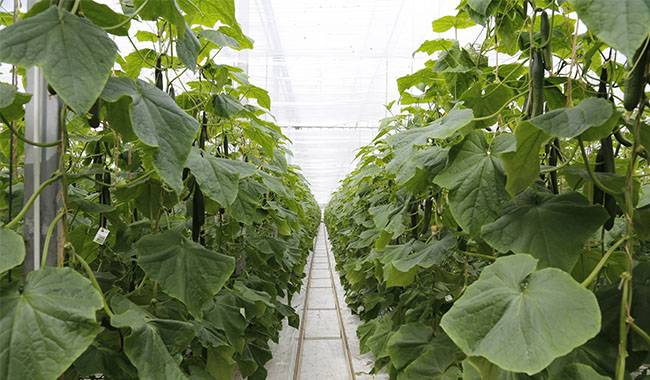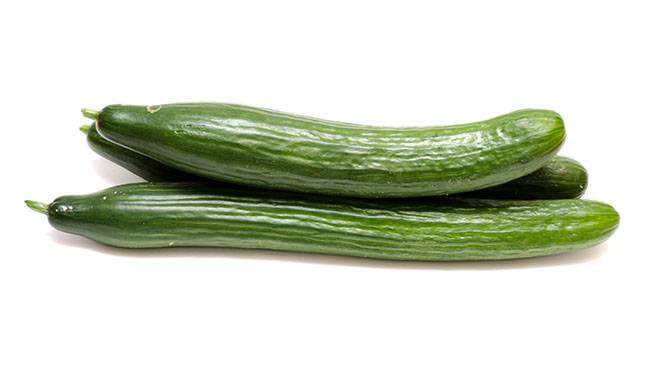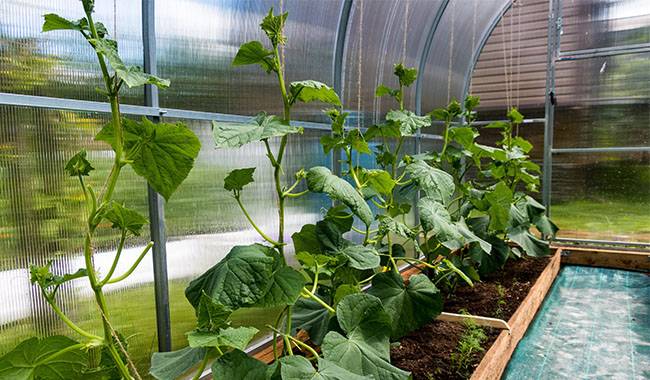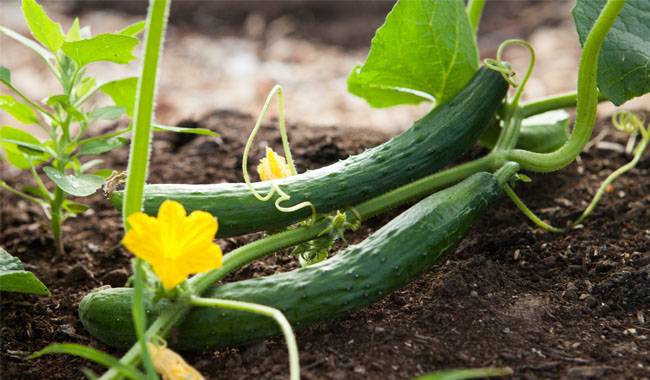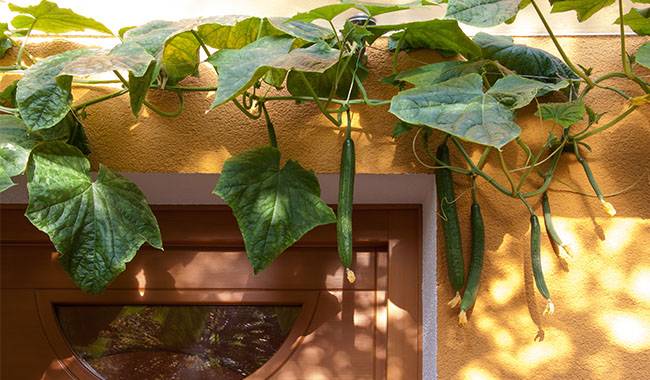
Nowadays, there are real mobile gardens on windowsills and balconies, and the “potted” or “balcony” feature in the vegetable and herb seed range has long since ceased to be a novelty.
But while everyone is tempted by risky peppers and tomatoes, the far less capricious cucumbers are not so popular.
And after all, with their high light, heat, and humidity requirements, this garden favorite will have a small crop even in pots. But it’s not worth it to try to transfer the usual varieties from the vegetable garden to the potted form. And you need to be prepared in advance because cucumbers still require a lot of attention, time, and space.
CUCUMBERS ON THE BALCONY CAN NOT BE GROWN WITHOUT THIS RULE
Although planning to grow cucumbers on the balcony, do not expect too much. Including from the harvest, which simply can not be the same as in the bed. So you will always be surprised by the results. There is also a special holiday surprise that you can pick directly from the bush.
The most common problems with growing cucumbers on the balcony are related to lighting and placement, containers, soil, and access to moisture.
Lighting and space for cucumbers on the balcony
Lighting is key to getting a good cucumber harvest on the balcony. It should be as bright as possible, but not too extreme: on southern balconies, the heat offsets all the advantages of good light (even screens can’t hide the searing heat).
The best for cucumbers is an east or southeast-facing balcony with mild morning sun. Even on a west or southwest balcony, the plants may not get enough direct sunlight, and on a northern balcony, it’s hard to expect a harvest. Therefore drafts are so taboo “urban” cucumbers and also shade.
In windy places, where temperatures constantly jump, cucumbers cannot grow without steady heat. On an open balcony, place it in a corner (or additionally study the wind “situation” to find the best location) and install a protective net.
Pots and soil
The choice of containers and soil for cucumbers is not easy either. A plant needs at least 5 liters of substrate for proper development, and no pot or box can hold them.
When choosing a container, it is best to immediately consider an option with a double container and an automatic watering system, otherwise, summer cucumbers will need to be watered several times a day to prevent drying out and overheating. Balcony cucumbers can be grown in ampoules, allowing the stems to hang down, or in boxes, pots, special double bags, buckets, and tubs. Good drainage holes and coarse trays are a must.
Cucumbers need a loose, universal, nutrient-rich substrate with high humus content and an acidity of 6.3-6.8 рН. Even neutral soil should be made with dolomite powder or chalky lime. Moisture retaining and loosening additives such as gypsum, perlite, vermiculite, or hydrogel should be added to the soil.
Soil disinfection is only a desirable measure, but a 1.2-2inch (3-5 cm) drainage layer is a must.
When planting plants to the edge of the pot left at least 2inch (5cm) of space (height), add substrate gradually as it grows, and cover in summer to prevent overheating.
For cucumbers, the container must be supported. You can place individual supports for each plant, or provide a common trellis against the wall to which you can tie the cucumbers as the plants grow.
Watering cucumbers on the balcony
Watering cucumbers requires persistence and diligence. Fast-growing, large, moist-loving cucumbers will not grow without ample and frequent watering.
Even a short drought can be a big problem for them. In summer, watering cucumbers once a day is often not enough. They should be watered in the morning or evening, allowing only the top layer of soil in the container to dry out, never completely.
And the plants have to be protected from the heat by moistening the air. Sprinkle water at night, install trays and containers and humidify them constantly. Without these measures, the growth of the greens and the yield of the cucumbers will be reduced at times.
Cucumbers for the balcony start with the variety
To produce potted cucumbers, they must be self-pollinating, compact, and early maturing – the growth period from sowing to flowering is as short as possible (preferably only 45-50 days). Any variety that meets these criteria cannot be used in the greenhouse.
Only special balcony varieties – unique parthenogenic rootstock hybrids – can boast truly delicious yields at home, which meet the minimum conditions without losing the ability to bear fruit.
Their main trump card is not self-pollination, but endurance. They are stress-resistant, well-adapted, and do not require much care.
Their main advantages include.
- high drought tolerance.
- Shade tolerance.
- Strong root system.
- Compact – smaller leaves and shorter internodes with fairly long, vigorous stems.
- Capable of producing more ovaries.
- Small fruits: not many fruits, not big, not more than 4inch (10cm), fast ripening fruits.
- Resistant to leaf spot, mosaic, powdery mildew, and pests.
The selection of balcony varieties is still limited. Instead of looking for rare varieties, browse the seed catalogs of tried-and-true producers and seek advice from your local garden center.
Beyond the “balcony” label, other listings are worth looking at. But even such balcony solitaires will not grow and bear fruit without proper care.
TO PLANT OR NOT TO PLANT
Cucumbers grown on the balcony can either be sown immediately in containers, where they grow until the end of fruiting, or sown in individual containers and later transplanted into permanent pots.
When sowing cucumbers on the balcony, choose the time “according to the weather”. If there is an opportunity to illuminate the plants and provide warmth even on a heated balcony in early spring, sowing can be done at any time.
However, if you plan to grow cucumbers in their natural environment, sow them in their natural environment so that by the time you get them out on the balcony, the nighttime temperatures will already be high enough.
Cucumbers should only be placed on the balcony from May to mid-June (glass balcony for the first ten years and open balcony for the last ten years). At this time, the plant should have grown 2 to 6 true leaves and the plant should be 10 to 26 days old. The best dates for sowing in the middle zone are the last decade of April and the first decade of May, on the open terrace.
Cucumber seeds should be soaked or treated with growth and rooting stimulants before sowing. Sow seeds in moist soil to a depth of 0.6-0.8inch (1.5-2 cm) without compacting the soil. When sowing in large boxes, the distance between plants – from 12-16inch (30-40 cm), from the wall – is at least 6inch (15 cm).
Seedlings should be kept at least 71-79°F (22-26°C) during the day, if possible – add heat to lower temperatures, keeping the soil temperature 68-77°F (20-25°C).
Cucumber seedlings need stable soil moisture without humidity, high temperatures 68-77°F (20-25°C), and bright diffused light. Harden and inoculate to direct morning sunlight after the emergence of true leaves.
CARE OF BALCONY CUCUMBERS
Daily care of balcony cucumbers should include, in addition to watering and moisturizing.
- if needed, suspending the garter from the lattice with soft twine or fine twine and retying it so that the stems are evenly distributed and oriented along with the support – pinching the top of the plant reaches the height of the support.
- pinching (leaving a few long side shoots in addition to a few decorative bushes).
- follow up every two weeks, starting from the third week after the release of the first pair of leaves, general-purpose fertilizers for vegetables and fruit trees or organic and biological fertilizers (when applying the follow up fertilizers, follow strictly the manufacturer’s instructions and keep in mind the benefits of their effects regarding fruits)
- removal of dry leaves and hygiene of leaves and soil.
- covering the soil with moss to prevent it from overheating and encasing the container, or using an external container to prevent overheating during peak summer months.
- protecting containers from cold temperatures when nighttime temperatures drop below 53°F (12°C) (usually starting in early August).




